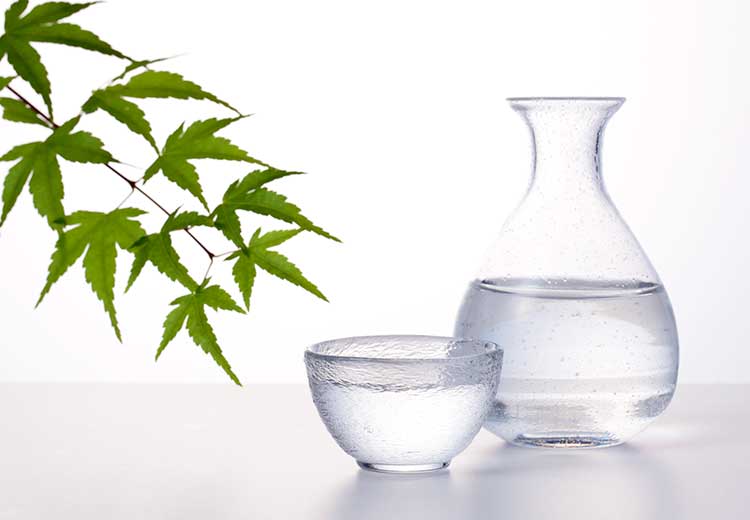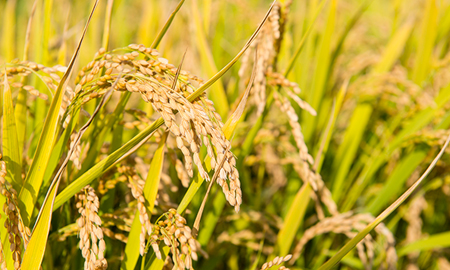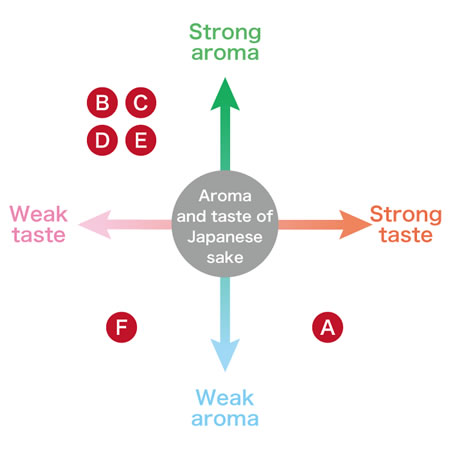Essiential Ingredients of Japanese Food - Japanese Sake

Japanese Sake
Traditional Japanese alcohol that continues evolving while preserving its history
History of Japanese sake

A main ingredient of Japanese sake is rice. Rice growing has started approximately 2500 years ago in Japan, which has been mentioned even in the oldest chronicles of Japan called the Nihonshoki. By the Heian era (900’s), the method of making sake became almost the same as the current way after introducing different cultures and techniques from China. Then in the Edo era (1600’s), sake was designed and produced in each region throughout the country using their traditional production methods, which have still seen even now.
Moreover, sake is regarded as a sacred item, which is also called to be a “thing to be placed within a God’s territory”. There is a tradition in Japan, in which sake is always offered to the God for praying to seek his teaching (this sake is specially called “sake for the God”).
How to make Japanese sake

In a simple term, Japanese sake is made with rice, malted rice (which is a grain of rice cultivated with koji mold) and water, the mixture of which are fermented and distilled in the making process. Firstly, rice is soaked in the water to allow it to absorb the water after being polished. Then it is steamed, add malted rice and water to the steamed rice after being cooled down to stimulate alcohol fermentation. After the repeat of fermentation and resolution for 2-3 weeks, the base of Japanese sake is ready. Sake production is completed after an extract from the base is filtered and pasteurized, and is aged approx. six months.
A group of masters for Japanese sake making is called “Toji”. Toji works at a brewery only for a sake-making period to control complicated processes of sake making. In recent years, because computer technologies control the complicated manufacturing process, some breweries make sake without the help of Toji.
Flavors of Japanese sake

Types of Japanese sake are determined depending on the ratio of rice polishing. There are six categories: A) Junmai-shu, B) Junmai-Ginjo-shu, C) Junmai Daiginjo-shu, D) Ginjo-shu, E) Daiginjo-shu, and F) Honjo-shu. It may sound difficult, but you will find your favorite Japanese sake by focusing on flavors and tastes as a standard (see the following map for your reference).
Japan has a lot of sake breweries throughout the country. The taste of sake varies depending on which part of Japan it is brewed in, because the climate and culture in Japan differs from region to region. Many people say, for instance, that sake made by breweries in eastern regions (Hokkaido, Tohoku, and Kanto-Koshinetsu) have an elegant flavor, while sake produced in western regions (Chubu, Kansai, Shikoku and Kyushu) have a powerful flavor.
Sake draws attentions even from overseas thanks to the effort of sake makers!

Recent years have seen a growing popularity of Japanese sake inside/outside Japan thanks to unique promotional activities by sake makers. Various promotional activities, including introducing new designs to sake bottles and labels, which are like those for wines, and producing sake with flavors favored by females and overseas people, have allowed people in overseas to accept sake easily. Also, sake tasting parties held by sake makers in Japan/overseas, which are similar to those by wine manufacturers, are popular, too.
In fact, sake is enjoyed now in overseas in a conventional way as it is served in wine glasses, or used as a base of cocktails, etc. Why don’t you try sweet sparkling sake with low alcohol as a start?
